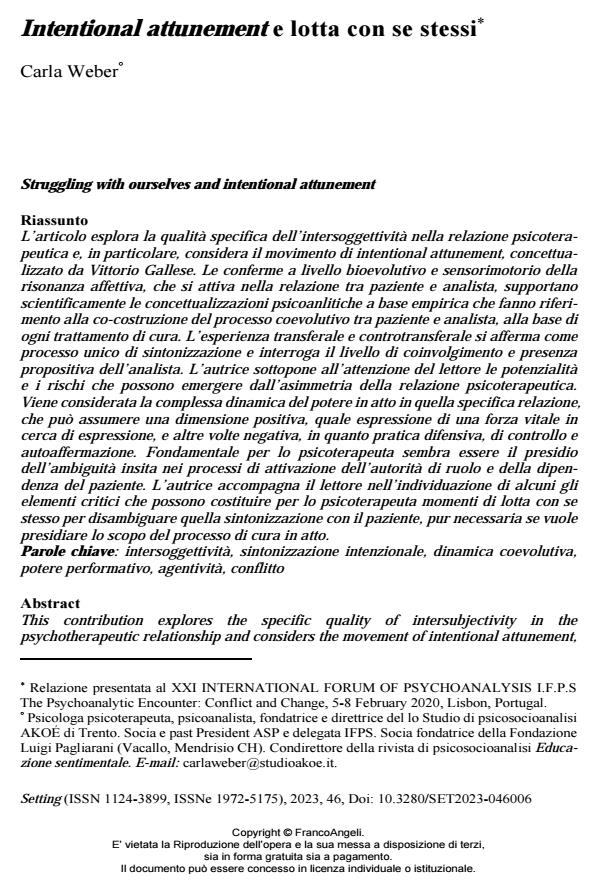Struggling with ourselves and intentional attunement
Journal title SETTING
Author/s Carla Weber
Publishing Year 2024 Issue 2023/46
Language Italian Pages 12 P. 103-114 File size 227 KB
DOI 10.3280/SET2023-046006
DOI is like a bar code for intellectual property: to have more infomation
click here
Below, you can see the article first page
If you want to buy this article in PDF format, you can do it, following the instructions to buy download credits

FrancoAngeli is member of Publishers International Linking Association, Inc (PILA), a not-for-profit association which run the CrossRef service enabling links to and from online scholarly content.
This contribution explores the specific quality of intersubjectivity in the psychotherapeutic relationship and considers the movement of intentional attunement, according with the approach conceptualized by Vittorio Gallese. The confirmations at the bio-evolutionary and sensorimotor level of the affective resonance, which is activated in the relationship between patient and analyst, scientifically corroborate the empirically based psychoanalytic conceptualizations, which refer to the co-construction of the co-evolutionary process between patient and analyst, at the basis of every care treatment. The transference and countertransference experience establishes itself as a unique process of attunement and questions the analyst’s level of involvement and proactive presence. The author brings to the reader’s attention the potential and risks that can emerge from the asymmetry of the psychotherapeutic relationship. The complex dynamic of power taking place in that specific relationship is considered, which can take on a positive dimension, as an expression of a vital force seeking expression, and at other times negative, as a defensive, control and self-affirmation practice. The management of the ambiguity inherent in the processes of activation of the patient’s role authority and dependence seems to be fundamental for the psychotherapist. The author accompanies the reader in identifying some critical elements that can constitute for psychotherapists moments of struggle with themselves to disambiguate that attunement with the patient, although necessary to safeguard the purpose of the ongoing treatment process.
Keywords: intersubjectivity, intentional attunement, coevolutionary dynamics, performative power, agency, conflict.
Carla Weber, Intentional attunement e lotta con se stessi in "SETTING" 46/2023, pp 103-114, DOI: 10.3280/SET2023-046006